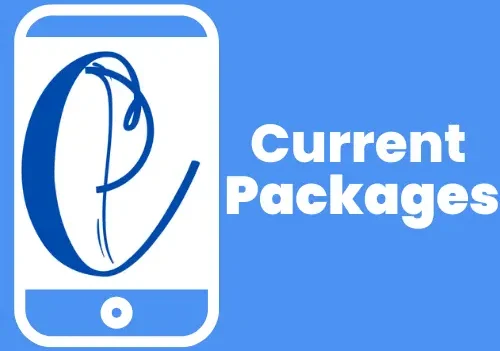Embracing Free Internet TV: The Ultimate Cord Cutting Guide
As digital disruption continues to reshape the media landscape, traditional television consumption has undergone a seismic shift. The relentless rise of on-demand streaming services, widespread internet accessibility, and the soaring costs associated with cable and satellite TV subscriptions have fuelled the ‘cord-cutting’ phenomenon – a term coined to describe the process of cancelling traditional pay-TV services in favour of alternative, often more affordable digital mediums.
While cord-cutting is seen as a cost-effective way to access television content, it can be an overwhelming change for many. In this ultimate guide, we will navigate the transition to free internet TV, a burgeoning segment of the cord-cutting universe. With a plethora of platforms offering a variety of content, choosing the right service can open the door to a vast library of shows and films without the hefty price tag.
Understanding Free Internet TV
Before we delve into the intricacies of cord-cutting, it’s vital to understand what free internet TV encompasses. Internet TV refers to streaming media services provided over the internet, which can range from paid subscriptions (like Netflix and Amazon Prime) to completely free services that are ad-supported. Free internet TV typically offers viewers a selection of live and on-demand content that can be streamed through websites, apps, or even digital media players.
The allure of these services lies in their flexibility and affordability. Unlike traditional television contracts, free internet TV often requires no long-term commitments, allowing users to watch content at their leisure without worrying about hefty monthly bills or hidden costs. Its integration with various internet-capable devices also ensures that users can enjoy their favourite shows and movies on a range of screens, from smartphones to smart TVs.
The Cord-Cutting Movement
The cord-cutting movement is not merely about abandoning cable; it’s also about embracing a lifestyle that promotes convenience and tailored viewing experiences. Many consumers today choose to curate their entertainment diet, selecting services that offer the variety and genres they prefer. By cutting the cord, viewers take control of their television consumption, curating their own bespoke viewing experiences.
There are several steps involved in transitioning to a free internet TV setup. It begins with assessing one’s viewing habits, understanding the available services, evaluating the necessary hardware, and preparing for changes in internet usage patterns. Simply put, cord-cutting requires careful planning and consideration to ensure a smooth transition.
Assessing Your Viewing Needs
The first step towards effective cord-cutting is to evaluate your viewing preferences. What type of content do you watch most frequently? Are you a fan of live sports, serial dramas, or reality TV? Identifying your must-have content can help pinpoint the free internet TV services that best cater to your interests.
Research and Selecting Services
Once you’ve recognised your viewing needs, the next step is to explore the various free internet TV options available. This search could lead you to on-demand libraries offered by public broadcasters or niche services that focus on specific areas like documentaries or foreign films. The goal is to find a service that provides a wide range of content that matches your preferences without the cost burden.
Preparing for Hardware Requirements
While selecting your preferred free internet TV services, also consider the hardware you’ll need. Smart TVs and streaming devices like Roku, Chromecast, or Amazon Fire Stick become vital for a seamless experience. Additionally, a robust internet connection is paramount, as streaming high-definition content requires stable and fast internet speeds to avoid buffering and interruptions.
Managing Internet Consumption
With an increase in streaming, it’s essential to keep an eye on your home’s internet data usage, particularly if your internet service provider imposes data caps. Heavy streaming can consume significant bandwidth, so it may be beneficial to review your current internet plan and, if necessary, upgrade to a service that can sustain increased media consumption.
The Benefits of Free Internet TV
One of the most apparent advantages of switching to free internet tv is the cost saving. Eliminating monthly cable subscriptions can free up funds for other necessities or leisure activities. Furthermore, free internet TV services tend to offer a diverse, often eclectic range of programming that could introduce you to content you might not encounter on traditional television networks.
Additionally, free internet TV places the power of choice in the hands of the consumer. With no commercial obligations dictating viewing schedules, users have the luxury to watch content on their own terms. This freedom distinctly contrasts with the rigid programming schedules of traditional television, offering a personalised and liberating viewing experience.
Navigating Limitations
Despite its numerous advantages, it’s important to acknowledge some limitations of free internet TV. For example, live events such as sports, award shows, or breaking news coverage may not always be readily available. Moreover, there’s sometimes a trade-off in terms of content exclusivity, as certain premium shows or movies might be restricted to paid services.
Tips for a Seamless Transition
To ensure a successful transition to free internet TV, consider the following tips. Firstly, test various services to see which ones you enjoy most. Many offer trial periods or full access without the need for an account. Secondly, invest in reliable hardware that supports your chosen services. Lastly, engage with online communities or forums that discuss cord-cutting to keep abreast of new platforms or changes to existing services.
Conclusion
Cord-cutting is more than a trend; it’s a movement towards a more agile and user-centric approach to television. By embracing free internet TV, viewers can enjoy a wide range of quality content without the burden of a hefty monthly subscription. With careful planning, the right equipment, and a bit of patience, anyone can tap into the vast potential of internet-based television and redefine their entertainment experience.
As the world continues to advance technologically, the ways in which we consume media will persist in evolving. The shift to free internet TV services is a clear indication of this evolution – a pathway towards increased freedom, choice, and engagement with content that resonates with individual preferences. For those ready to cut the cord, the future of television is now one of limitless possibilities, all just a click away.






